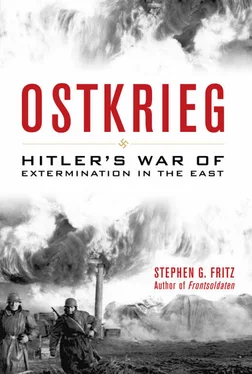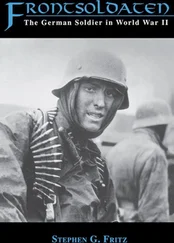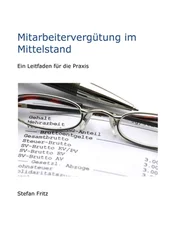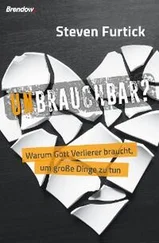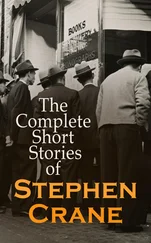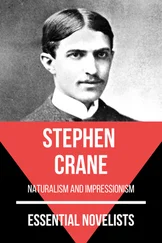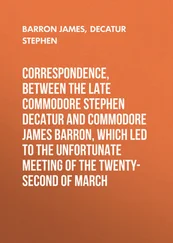Jahn, Peter, and Reinhard Rürup, eds. Erobern und Vernichten: Der Krieg gegen die Sowjetunion, 1941–1945 . Berlin: Argon, 1991.
Jansen, Hans. Der Madagaskar-Plan: Die beabsichtigte Deportation der europäischen Juden nach Madagaskar . Munich: Herbig, 1997.
Jarausch, Konrad, ed. Reluctant Accomplice: A Wehrmacht Soldier’s Letters from the Eastern Front . Princeton, NJ: Princeton University Press, 2011.
Jarausch, Konrad, Klaus Jochen Arnold, and Hans-Jochen Vogel. “Das Stille Sterben…”: Feldpostbriefe aus Polen und Russland, 1939–1942 . Paderborn: Schöningh, 2008.
Jersak, Tobias. “Decisions to Murder and to Lie: German War Society and the Holocaust.” In German Wartime Society, 1939–1945: Politicization, Disintegration, and the Struggle for Survival (vol. 9/1 of Germany and the Second World War ), ed. Jörg Echternkamp, trans. Derry Cook-Radmore, 287–368. Oxford: Clarendon, 2008.
———. “Blitzkrieg Revisited: A New Look at Nazi War and Extermination Planning.” Historical Journal 43, no. 2 (2000): 565–82.
———. “Die Interaktion von Kriegsverlauf und Judenvernichtung: Ein Blick auf Hitlers Strategie im Spätsommer 1941.” Historische Zeitschrift 268, no. 2 (1999): 311–74.
———. “A Matter of Foreign Policy: ‘Final Solution’ and ‘Final Victory’ in Nazi Germany.” German History 21, no. 3 (2003): 369–91.
Jick, Leon A. “Method in Madness: An Examination of the Motivations for Nazi Mass Murder.” Modern Judaism 18, no. 2 (1998): 153–72.
Jochmann, Werner, ed. Adolf Hitler: Monologe im Führerhauptquartier, 1941–1944: Die Aufzeichnungen Heinrich Heims . Hamburg: Knaus, 1980.
Johr, Barbara. “Die Ereignisse in Zahlen.” In Befreier und Befreite: Krieg, Vergewaltigung, Kinder , ed. Helke Sander and Barbara Johr, 46–72. Munich: A. Kunstmann, 1992.
Jukes, Geoffrey. Hitler’s Stalingrad Decisions . Berkeley and Los Angeles: University of California Press, 1985.
Junker, Detlef. Kampf um die Weltmacht: Die USA und das Dritte Reich, 1933–1945 . Dusseldorf: Schwann-Bagel, 1988.
Jureit, Ulrike. “Motive—Mentalitäten—Handlungsspielräume: Theoretische Anmerkungen zu Handlungsoptionen von Soldaten.” In Verbrechen der Wehrmacht: Bilanz einer Debatte , ed. Christian Hartmann, Johannes Hürter, and Ulrike Jureit, 163–70. Munich: Beck, 2005.
Kagan, Frederick. “The Evacuation of Soviet Industry in the Wake of ‘Barbarossa’: A Key to the Soviet Victory.” Journal of Slavic Military Studies 8, no. 2 (1995): 387–414.
Kaienburg, Hermann. Die Wirtschaft der SS . Berlin: Metropol, 2003.
———. “Jüdische Arbeitslager an der ‘Strasse der SS.’” 1999: Zeitschrift für Sozialgeschichte des 20. und 21. Jahrhunderts 11, no. 1 (1996): 13–39.
Kaiser, Wolf, ed. Täter im Vernichtungskrieg: Der Überfall auf die Sowjetunion und der Völkermord an den Juden . Berlin: Propyläen, 2002.
Kardorff, Ursula von. Berliner Aufzeichnungen: Aus den Jahren 1942–1945 . 2nd ed. Munich: Deutscher Taschenbuch, 1982.
Kárný, Miroslav. “ ‘Vernichtung durch Arbeit’ in Leitmeritz: Die SS-Führungsstäbe in der deutschen Kriegswirtschaft.” 1999: Zeitschrift für Sozialgeschichte des 20. und 21. Jahrhunderts 8, no. 4 (1993): 37–61.
Kaufman, Theodore N. Germany Must Perish! New York: Argyle, 1941.
Kay, Alex J. “Revisiting the Meeting of the Staatssekretäre on 2 May 1941: A Response to Klaus Jochen Arnold and Gert C. Lübbers.” Journal of Contemporary History 43, no. 1 (2008): 93–103.
———. Exploitation, Resettlement, Mass Murder: Political and Economic Planning for German Occupation Policy in the Soviet Union, 1940–1941 . New York: Berghahn, 2006.
———. “Germany’s Staatssekretäre, Mass Starvation and the Meeting of 2 May 1941.” Journal of Contemporary History 41, no. 4 (2006): 685–700.
Keegan, John. “Berlin.” MHQ: Quarterly Journal of Military History 2, no. 2 (1990): 72–83.
———. The Times Atlas of the Second World War . New York: Harper & Row, 1989.
Kehrig, Manfred. “Die 6. Armee im Kessel von Stalingrad.” In Stalingrad: Ereignis—Wirkung—Symbol , ed. Jürgen Förster, 76–110. Munich: Piper, 1992.
———. Stalingrad: Analyse und Dokumentation einer Schlacht . Stuttgart: Deutsche Verlags-Anstalt, 1974.
Keller, Rolf, and Reinhard Otto. “Das Massensterben der sowjetischen Kriegsgefangenen und die Wehrmachtbürokratie: Unterlagen zur Registrierung der sowjetischen Kriegsgefangenen 1941–1945 in deutschen und russischen Institutionen.” Militärgeschichtliche Mitteilungen 57, no. 1 (1998): 149–80.
Keller, Sven. “Verbrechen in der Endphase des Zweiten Weltkrieges: Überlegungen zu Abgrenzung, Methodik und Quellenkritik.” In Terror nach Innen: Verbrechen am Ende des Zweiten Weltkrieges , ed. Cord Arendes, Edgar Wolfrum, and Jörg Zedler, 25–50. Göttingen: Wallstein, 2006.
Kellogg, Michael. The Russian Roots of Nazism: White Emigrés and the Making of National Socialism, 1917–1945 . New York: Cambridge University Press, 2005.
Kershaw, Ian. Fateful Choices: Ten Decisions That Changed the World, 1940–1941 . New York: Penguin, 2007.
———. “Hitler’s Role in the ‘Final Solution.’” Yad Vashem Studies 34 (2006): 7–43.
———. “Hitler and the Uniqueness of Nazism.” Journal of Contemporary History 39, no. 2 (2004): 239–54.
———. Hitler, 1936–1945: Nemesis . New York: Norton, 2000.
———. Hitler, 1889–1936: Hubris . New York: Norton, 1999.
———. “Ideologue and Propagandist: Hitler in Light of His Speeches, Writings and Orders, 1925–1928.” Yad Vashem Studies 23 (1993): 321–34.
———. “Improvised Genocide? The Emergence of the ‘Final Solution’ in the ‘Warthegau.’” Transactions of the Royal Historical Society 2 (1992): 51–78.
———. The “Hitler Myth”: Image and Reality in the Third Reich . New York: Oxford University Press, 1987.
———. “German Popular Opinion and the ‘Jewish Question,’ 1939–1943: Some Further Reflections.” In Die Juden im nationalsozialistischen Deutschland , ed. Arnold Paucker, 365–86. Tübingen: J. C. B. Mohr, 1986.
———. Popular Opinion and Political Dissent in the Third Reich: Bavaria, 1933–1945 . Oxford: Oxford University Press, 1983.
———. “The Persecution of the Jews and German Popular Opinion in the Third Reich.” Leo Baeck Institute Year Book 26 (1981): 261–89.
———. “Antisemitismus und Volksmeinung: Reaktionen auf die Judenverfolgung.” In Bayern in der NS-Zeit (6 vols.), ed. Martin Broszat, Elke Fröhlich, and Falk Wiesemann, 2, pt. A:281–348. Munich: Oldenbourg, 1979.
Kershaw, Robert J. War without Garlands: Operation Barbarossa, 1941/42 . Rockville Centre, NY: Sarpedon, 2000.
Kersting, Franz-Werner. “Wehrmacht und Schule im ‘Dritten Reich.’” In Die Wehrmacht: Mythos und Realität , ed. Rolf-Dieter Müller and Hans-Erich Volkmann, 436–55. Munich: Oldenbourg, 1999.
Kettenacker, Lothar. “Hitler’s Final Solution and Its Rationalization.” In The Policies of Genocide: Jews and Soviet Prisoners of War in Nazi Germany , ed. Gerhard Hirschfeld, 73–96. London: Allen & Unwin, 1986.
King, Curtis S. “Operation Bagration: A Soviet Victory.” Military Review 74, no. 4 (1994): 89–94.
Kipp, Jacob. “Barbarossa and the Crisis of Successive Operations: The Smolensk Engagements, July 10–August 7, 1941.” Soviet and Post-Soviet Review 19, no. 1 (1992): 91–136.
Читать дальше
